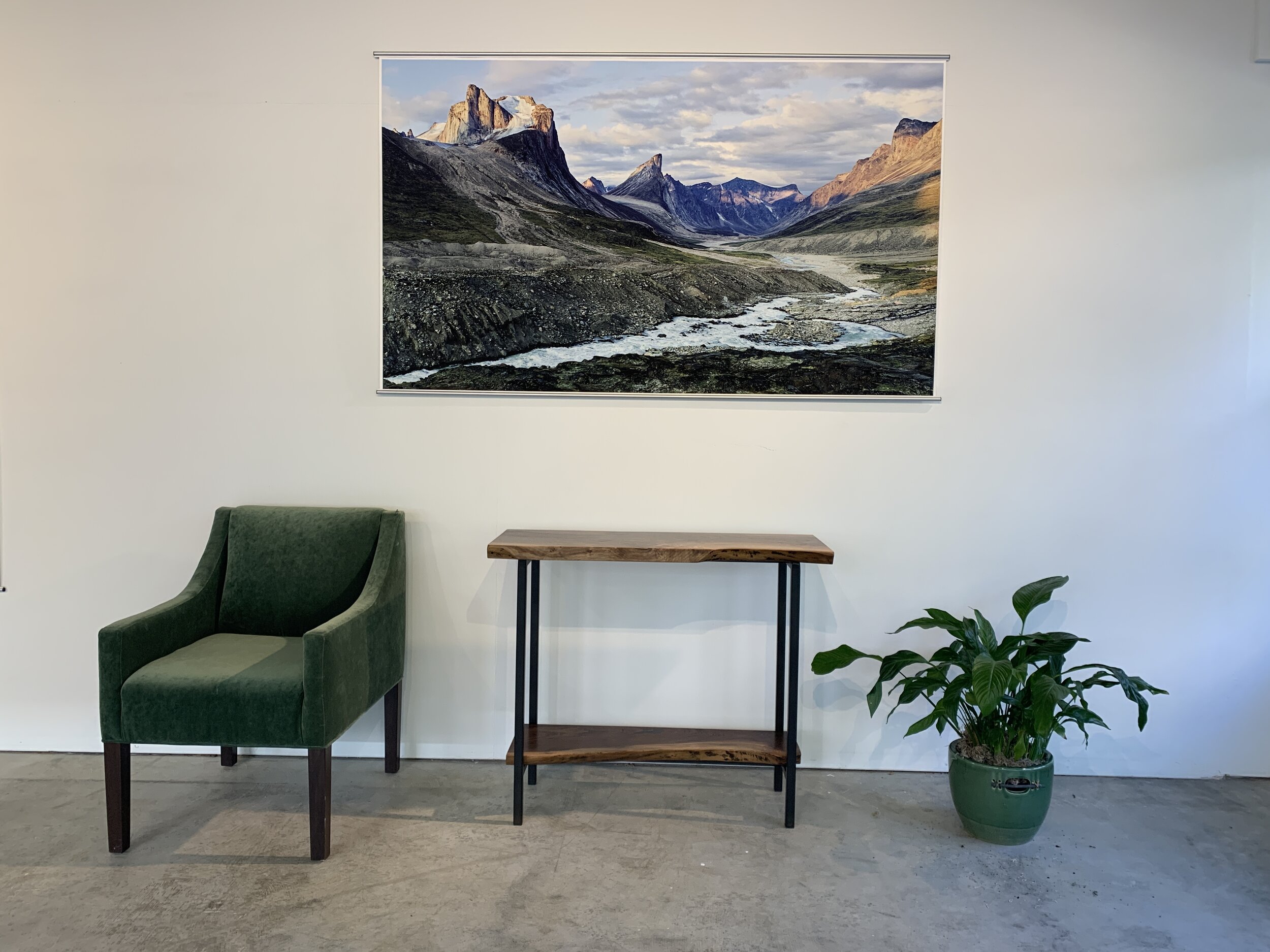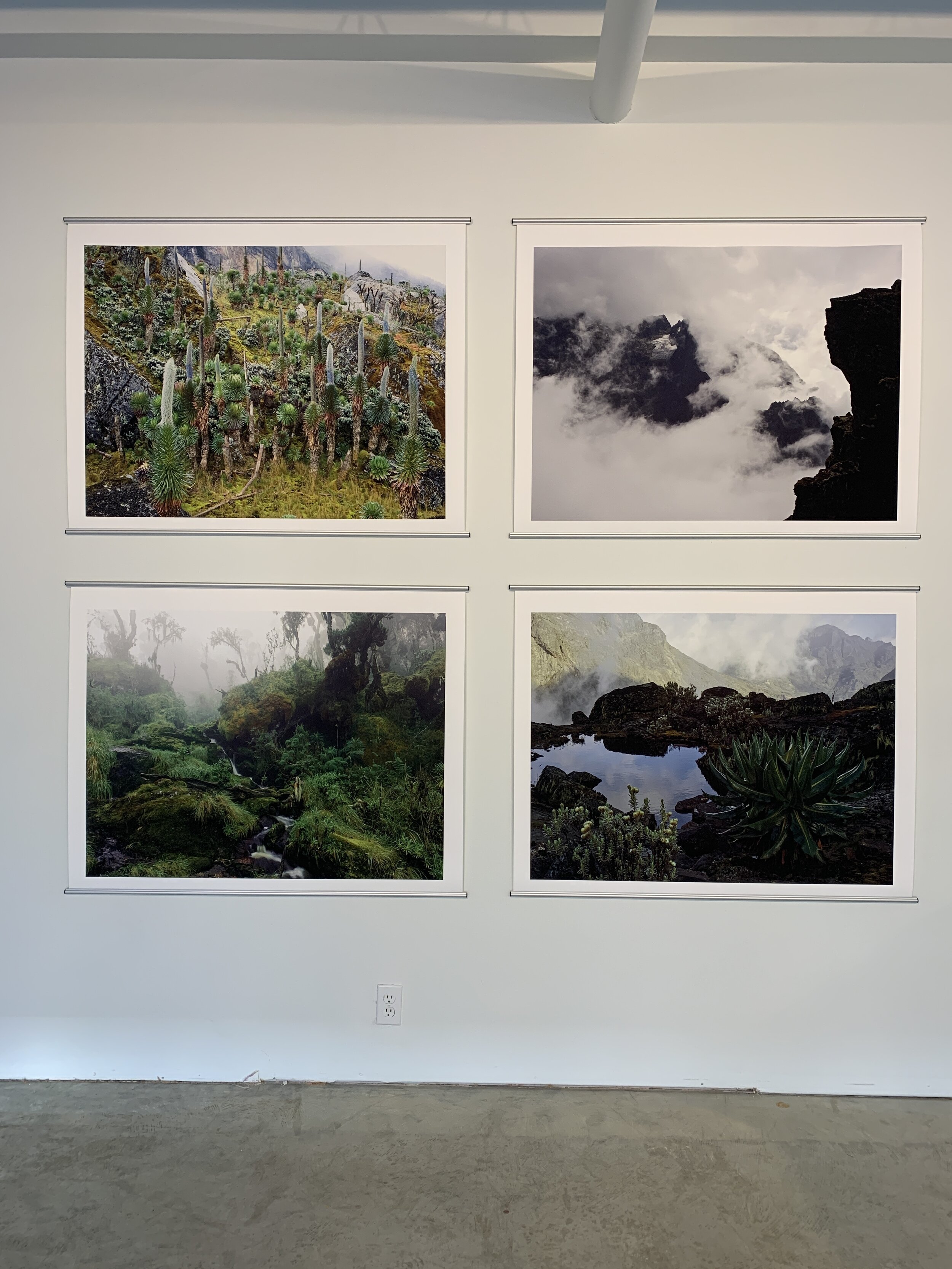Through June 27, 2020
Ancient Lands, Recent Expeditions is an Ian van Coller gallery exhibition comprising work from over the past five years. The Montana-based contemporary artist was awarded a 2018 Guggenheim for his often collaborative work (van Coller travels with scientists, documenting their research sites) on climate change and deep time. The work presented in this art exhibition comes from four expeditions to sites in Africa, the Americas, and the Arctic. These works continue on the aforementioned themes and distinguish themselves within van Coller’s greater oeuvre. The subject of glacial loss is for the artist and photographer far more than a signifier for climate change; the glacier is a symbol that embodies time itself.
Two bodies of work from Africa focus on the continent’s tropical glaciers: Kilimanjaro: The Last Glacier, presented by a small artist’s book, and Rwenzori, represented by four photographic prints. Defined by latitude, tropical glaciers are both rare and especially susceptible to planetary warming. The Kilimanjaro book is a special gem; it is a precious hand-held version of the more formal and oversized volume (37 x 50 in. open) van Coller created. With the same contents as the XL volume, this handmade artist’s book is accessible and intimate. The book takes a nuanced approach to interconnect themes. Through its pages we travel with van Coller and glacial scientists he accompanies on a difficult climb to the summit. The landscape is personified through juxtapositions of vistas and portraits of the porters who support the expedition and carry supplies. We feel the fragility of the land so much as we fear for the men whose livelihood depends on the existence of the glaciers for the biodiversity they support and the tourism they drive.
The Rwenzori photographs by Ian van Coller are a harmonizing parallel to the Kilimanjaro work. The tight edit of four works of this significant site in Uganda focus on different segments of vegetation supported by regional glaciers. With shifts in altitude we move from tropical rainforest through alpine meadows and snow packed peaks, though they posses dramatically less base snow than in the past. In 1906, the Rwenzori was home to 43 named glaciers distributed over six mountains and by 2005 less than half of these were still present on only three mountains. The Rwenzori glaciers remain a source of the Nile River.
Two large black and white photographs were selected to represent work from van Coller’s The Birdwatcher book, still in production. These works are somewhat unusual, as most of the contemporary artist’s work is in color, but these junglescapes of the Choco region in the Colombian Andes feel only more dramatic and encompassing in lush tones of black and white. As one of the most biodiverse places on Earth, Columbia is home to 20 percent of all bird species on the planet. These works underline the Artist’s aims to re-inspire sour sense of Sublime awe in nature.
One breathtaking panorama (masthead image) represents an August (2019) trip van Coller took to the Canadian Arctic’s Baffin Island. This photograph depicts an epic land transformed by time and ice. Named after English explorer William Baffin, the island was likely visited by pre-Colombian Norse explorers and is believed to be the site of Helluland referred to in the sagas of Eric the Red. It has changed dramatically since those early voyages, as icecaps containing Canada’s oldest ice, some over 20,000 years old disappear forever.














